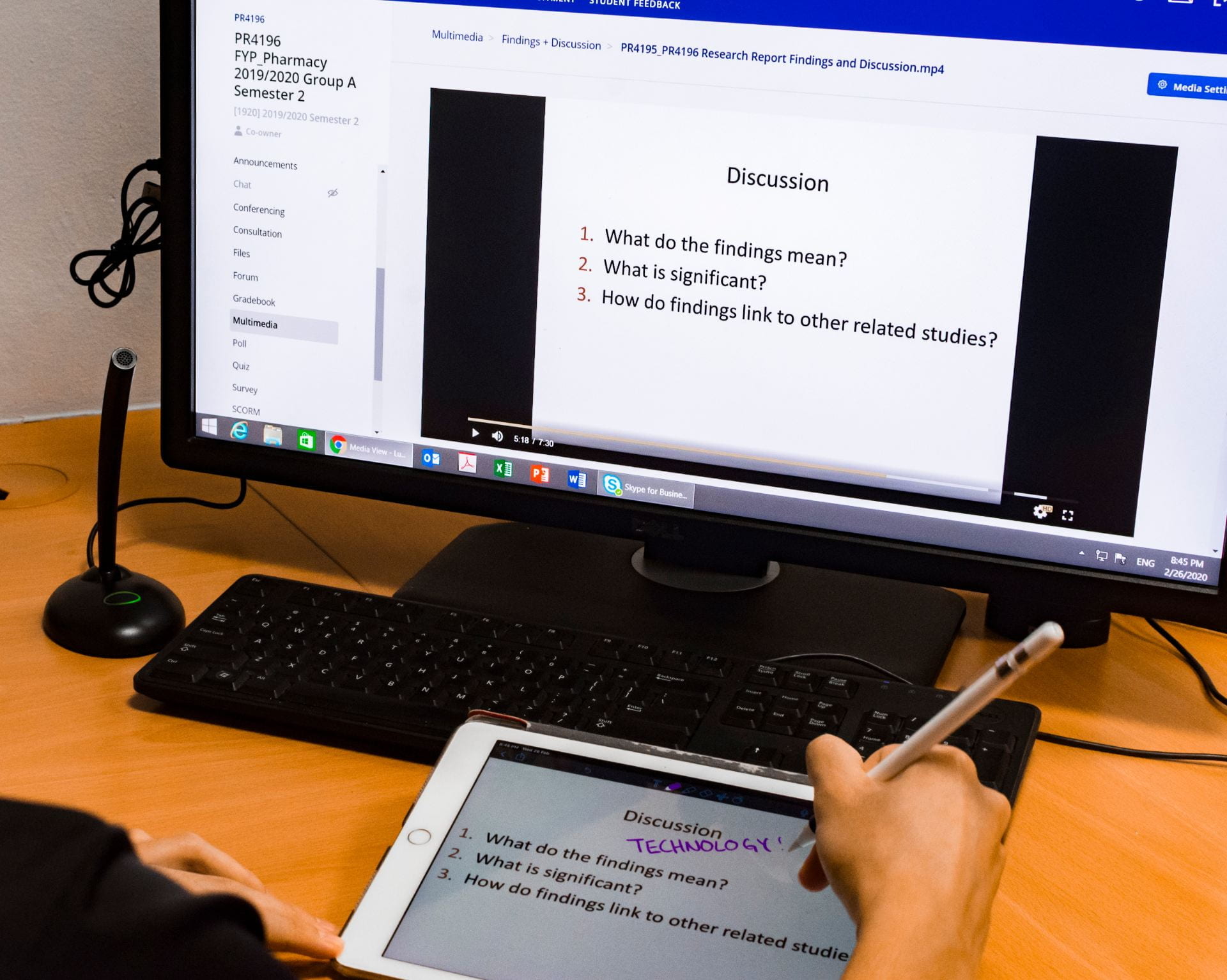
Introduction
Technology-enhanced learning (TEL) is a broad term to refer to how technology, its applications, and affordances are used for teaching and learning. Blended, flipped, MOOCs are a few key approaches to how teaching and learning is done with the use of technology. The appropriate and effective use of technology for teaching and learning has become important in situations where face-to-face learning is minimised or not possible.
In various contexts across universities, teachers and students have made creative use of TEL tools and platforms to engage in learning. This resource is curates information that might be of relevance for the NUS community.
If you have or know of anyone with good resources to share, we would be pleased to feature them. Please write to us at cdtsec@nus.edu.sg.
What Does the Literature Say About TEL?
Here, we share what scholars say about TEL.
Scholarly Approach to TEL
- Kirkwood, A. & Price, L. (2013). Missing: Evidence of a scholarly approach to teaching and learning with technology in higher education. Teaching in Higher Education, 18(3), 327-337.
- Reeves, T. C., Herrington, J., & Oliver, R. (2005). Design research: A socially responsible approach to instructional technology research in higher education. Journal of Computing in Higher Education, 16(2), 96.
- Wickens, R. (2013). SoTEL: Toward a scholarship of technology-enhanced learning. Canadian Journal of University Continuing Education, 32(2).
Relationship Between TEL and Teachers’ Teaching Beliefs/Practices
- Mishra, P., & Koehler, M. J. (2006). Technological pedagogical content knowledge: A framework for teacher knowledge. Teacher College Record, 108(6), 1017.
- Ertmer, P. A., Ottenbreit-Leftwich, A. T. (2010). Teacher technology change: How knowledge, confidence, beliefs, and culture intersect. Journal of Research on Technology in Education, 42(3), 255-284
Rethinking Education in view of TEL Innovations
How Do I Start Using Technology for Teaching and Learning?
If you plan to incorporate technology into your teaching practice but you are not sure how, we share two types of resources: learning sessions offered by CDTL and CIT, and resource guides.
Topic Learning Sessions (refer to the Catalogue for details on individual sessions Resource Guides
LumiNUS LumiNUS for Teaching and Learning
Facilitating Effective Online Discussions using LumiNUS
Assessing Student Learning Using LumiNUSGuide on LumiNUS for Teaching and Learning
Guide on Facilitating Effective Online Discussions using LumiNUS
Guide on Designing Effective Online Assessments
Synchronous and Asynchronous Discussion Platforms Zoom for online teaching
Moderating Online Synchronous Discussions for Tutorials
Microsoft Teams for teaching onlineGuide on Zoom for Online Teaching
Wiki Guide on Microsoft Teams for Teaching
Guide on Designing Your Module Website Using Blogs
Guide on Using Google Apps for Teaching and Learning
Ten best practices for teaching online(from Tomorrow's Professor, by Stanford University)
Tools for Preparing Online Resources Recording Online Lectures with Panopto
Developing e-Learning Resources Using Camtasia Studio
Recording Annotations using Ink2Go
Designing your first storyboard for e-learning projectsWiki Guide on Recording Online Lectures With Panopto
Self-help Module on Developing e-Learning Resources Using Camtasia Studio
Wiki Guide on Recording slides with voice narration using PowerPoint
Wiki Guide on Recording Annotations using Ink2Go
Guide on Storyboarding
Tools for Assessment Planning for Open-book Take-home Examinations
Designing Multiple-choice Questions (MCQs) for Take-home Examinations
Using ExamSoft for Take-home Examinations Video resource on Open-book Take-home Examinations
Video resource on Designing MCQs for Take-home Examinations
Video resource on Using ExamSoft for Take-home Examinations
You can contact us at cdtsec@nus.edu.sg or visit the Centre for Instructional Technology website if you require further TEL-related assistance.
How Have Some of Our Colleagues Used Technology for Teaching and Learning?
We share recent works by some colleagues in their use of technology.
Exemplars
- Aileen LAM/Centre for English Language Communication (CELC)
- Jody LUU/Centre for English Language Communication (CELC)
- Rafi RASHID/NUS Graduate School for Integrative Sciences and Engineering (NGS)
Is There Any Support in Exploring TEL?
NUS-wide, there are at least two avenues for us start a TEL-related project or to look into certain aspects of TEL. They are:
Learning Innovation Fund – Technology (LIFT)
- Blended Modules and MOOCs (connect via NUS VPN)
- LIFT Projects (connect via NUS VPN)
Teaching Enhancement Grants (TEG)
- TEG: 3 reasons to apply
- Learning Improvement Projects
- Learning Communities
- Education Conference Allowances
More Useful Resources
In addition to the resources that are listed earlier in the section, below is a collation of other related resources and sharing by NUS colleagues on their experience in using technology for teaching and learning.
Approaches to TEL
- On Technology and the NUS Lifelong Learning Initiative
- From Apps to Adventure Learning: Engaging Millions of Learners Around the World video
- Digital Literacies: Knowledge, Skills and Attitudes for a Digital Age video
Blended Learning and Flipped Classroom
- What is Blended Learning and Flipped Classrooms
- Strategies for Engaging students in the blended learning
- The Slow Road To Flipping
- Flipping the Classroom, Time to Teach video
Technology in Pedagogy Series (TiPS): Sharing by NUS Colleagues
Social Media
- Apps for Educators
- Facebook for Teaching and Learning
- Enhancing Your Academic Reputation With Social Media
- Social Media in Education
Collaboration
- Collaborative Learning Using Google Docs and Maps
- Google Docs and the Lonely Craft of Writing
- Lunchtime Guide to Student Blogging
- Wikis for Participatory Learning
- Online Assessments
- How Shall We Know Them? Learning Through Assessment
- Using Personal Learning Environments (PLEs) To Encourage Peer Learning and Learner Autonomy
Active Learning
- Gamification: How To Do It Right
- Leveraging Peer Feedback
- Using SMS to Increase Interaction With Students During Lectures
- Teaching Large Classes: Technology to the Rescue!
- Using Multimodal Communications for Critical Thinking Assignments
- Virtually Vygotsky: Using Technology to Scaffold Student Learning
Other topics
- If You Can’t Say It, Voice It: Using Text-to-speech in Presentations
- Teaching Computational Thinking Using Cloud Computing

